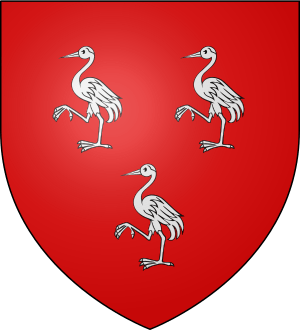Lord Cranstoun facts for kids
The title Lord Cranstoun was a special noble rank in Scotland. It was first given to Sir William Cranstoun on November 17, 1609. This title was part of the Peerage of Scotland, which is a group of important noble ranks given by the King or Queen of Scotland. The title of Lord Cranstoun ended in 1869 when the eleventh Lord Cranstoun passed away without having any children to inherit it.
Contents
What Was a Lord in Scotland?
In olden times, a "Lord" was a very important person, usually a nobleman who had been given a special rank by the King or Queen. These titles were often passed down through families, usually from father to son. Being a Lord meant you had a high social status and sometimes special duties or privileges, like advising the monarch or managing lands.
The Peerage of Scotland
The Peerage of Scotland is a list of all the noble titles that were created in Scotland before the Acts of Union 1707, when Scotland and England joined to form Great Britain. These titles included Dukes, Marquesses, Earls, Viscounts, and Lords. Each title had its own level of importance. The title of Lord was one of the oldest and most respected ranks.
How Titles Were Created and Ended
Titles like Lord Cranstoun were "created" when a monarch decided to honor someone for their loyalty or service. The person would then become the first holder of that title. The title would then usually pass down through their family, typically to the eldest son. If there were no sons or other male heirs to inherit the title, it would become "extinct." This means the title ended because there was no one left in the family to carry it on. This is what happened to the Lord Cranstoun title in 1869.
The Lords Cranstoun (1609-1869)
Over many years, eleven different people held the title of Lord Cranstoun. Each one inherited the title from the previous Lord, usually their father or a close relative.
- William Cranstoun, 1st Lord Cranstoun (passed away in June 1627)
- John Cranstoun, 2nd Lord Cranstoun (lived from about 1570 to 1648)
- William Cranstoun, 3rd Lord Cranstoun (passed away after July 1664)
- James Cranstoun, 4th Lord Cranstoun (passed away between 1685 and 1688)
- William Cranstoun, 5th Lord Cranstoun (passed away in 1727)
- James Cranstoun, 6th Lord Cranstoun (passed away in 1773)
- William Cranstoun, 7th Lord Cranstoun (1749–1778)
- James Cranstoun, 8th Lord Cranstoun (1755–1796)
- James Edmund Cranstoun, 9th Lord Cranstoun (1780–1818)
- James Edmund Cranstoun, 10th Lord Cranstoun (1809–1869)
- Charles Frederick Cranstoun, 11th Lord Cranstoun (1813–1869)
The eleventh and last Lord Cranstoun, Charles Frederick Cranstoun, passed away in 1869. Since he did not have any children, the title could not be passed on, and so it became extinct.


